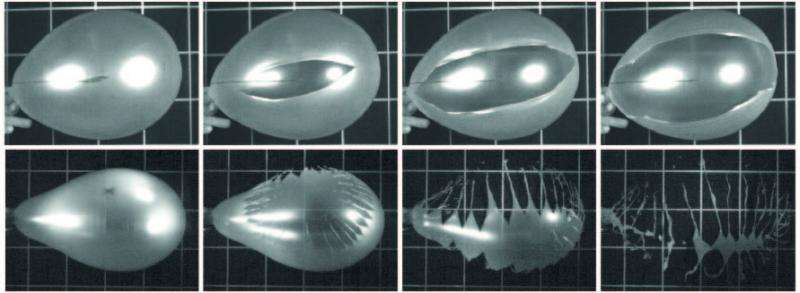Picture : The two explosion mechanisms of a rubber balloon. Top line: opening mechanism of a moderately inflated balloon. A crack propagates across the membrane, finally splitting it into two. Bottom line: a highly tensed balloon bursts into a large number of long shreds. The time interval between each image is 0.3 ms. Credit: Sébastien Moulinet
A moderately inflated rubber balloon pricked with a needle bursts into two large fragments. However, if you inflate it until it bursts spontaneously, you get dozens of shreds.
Now, Sébastien Moulinet and Mokhtar Adda-Bedia at the Laboratoire de Physique Statistique (CNRS/UPMC/ENS/Université Paris Diderot) have explained this phenomenon: when a crack propagating across the surface of a balloon reaches a critical speed, it becomes unstable and splits into two new cracks.
It is this mechanism of proliferating cracks that causes the balloon to burst into shreds. The work, published in Physical Review Letters, sheds light on the fragmentation processes in materials subjected to impacts or explosions.
More information: Popping Balloons: A Case Study of Dynamical Fragmentation, Phys. Rev. Lett. 115, 184301 – Published 30 October 2015. dx.doi.org/10.1103/PhysRevLett.115.184301
Philip Ball. Two Modes of Balloon Bursting Revealed, Physics (2015). DOI: 10.1103/Physics.8.105
Journal information: Physical Review Letters
Provided by CNRS





















